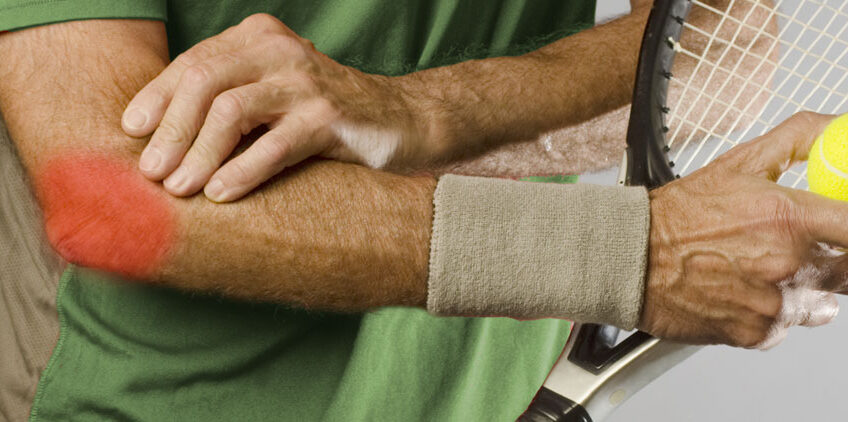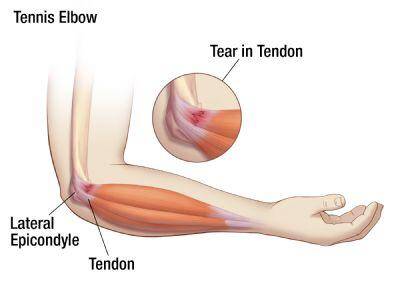
All You Need To Know About Tennis Elbow!
Did you know that Tennis Elbow affects over 50% of tennis players? Research suggests that the best way to treat tennis elbow is with physiotherapy under a progressive and controlled loading exercise programme that is catered specifically for your needs. These types of programme causes the tendon to undergo gradual loading movements, which helps to stimulate the healing process by changing the tendon tissue structure, eventually leading to repair.
What Is Tennis Elbow?
Tennis Elbow or Lateral Epicondylosis (LE) is an overuse injury. It occurs when the muscles and tendons of your forearm are strained due to repetitive or strenuous activity.
What Causes Tennis Elbow?
As the name suggests, it’s commonly associated with playing tennis due to the nature of gripping and swinging the racket. However, it can also occur from other activities that require repetitive gripping, lifting, and the use of your wrist and arm. Some examples include lifting weights, working in manual jobs such as a carpenter, or as simple as using the keyboard for long repetitious periods.
How Do I Know If I Have Tennis Elbow ?
You’ll experience pain and tenderness around the bony bump on the outside of your elbow, where your forearm extensor muscles are attached via a tendon. Pain can also spread into the forearm. Your grip strength will probably be impaired and the twisting movements of the forearm may also be weak.
Additionally, if you have a long standing neck or shoulder issues, it is worth considering upper trapezius strengthening exercises. Read our article about the upper trap and follow some of the simple exercises to strengthen them!
Why Does The Tendon Hurt?
Historically, it was thought that tennis elbow was due to an acute inflammation of the tendon. However, research has suggested that there is little to no inflammatory process present in these tendons. The pain and weakness are caused by tendon degradation and microscopic tears in the tissue.
The tendon shows pathological changes due to the inability to adapt to load. But, the good news is that tendons are extremely strong structures and are generally good at adapting to high loads. Therefore, it will be able to repair and recover with the appropriate treatment.
Should I Take Any Anti-Inflammatory Medication Or Cortisone Injection?
Whilst studies suggest that there is a lack of inflammation, it is thought that the short term (7-14 days) use of anti-inflammatories can help control acute pain probably due to an analgesic effect.
As for the cortisone injection, the simple answer is no. Studies have shown that there is no long term benefit from the use of local steroid injections for tennis elbow. The long term outcomes were significantly worse when compared to those who did exercises instead. Longer periods of disabilities were also reported among those that has taken steroid injections.
How Can I Prevent Tennis Elbow?
As with all tendinopathy (these can occur at other joints like the knee, shoulder, ankle, and hip), it is important to manage the amount of load in a controlled way. Instead of increasing the load on a specific tendon abruptly, try doing so gradually. For example, increasing the number of loading sessions a week moderately or slowly increasing the amount of load applied, over the course of a couple of weeks.
You can also perform regular and specific strength training for joint(s) that were used in the particular loading activity. For example, if you are playing tennis, focus on keeping your shoulder, wrist, and hand musculature strong.
If you are a runner, focus on doing strength training for your gluteals, quads, and calf. This will gradually build up the strength and endurance required to meet or increase the load applied to the tendon via the muscle.
Ask For Help!
If you’re still experiencing pain and tension despite your best efforts, seek help from a physiotherapist! A physio can help to tailor an exercise program to your specific body needs and with the considerations of your specific lifestyle and medical background.
Written By: Kathryn Howard, B.Phty. (NZ) M.S.P.A.
Kat has over 27 years of experience in musculoskeletal assessment and treatment with a special interest in spinal (back, neck) & lower limb (hip, knee and ankle) pain and dysfunction, and has considerable experience treating both dance-related injuries and pregnancy-related (pre and post natal) musculoskeletal issues. She often incorporates Pilates-based exercise into her clients’ rehabilitation to facilitate effective recovery from injury.

